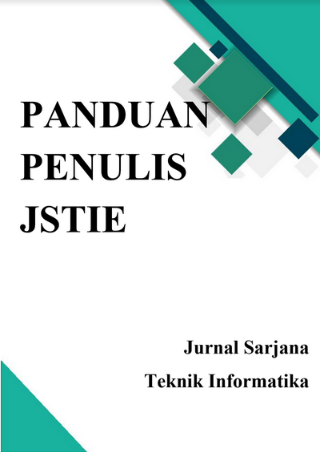IMPLEMENTASI METODE SECURITY LIFE CYCLE DAN BLOWFISH PADA PENGAMANAN SIMULASI UJIAN AKHIR BAHASA INGGRIS
DOI:
https://doi.org/10.12928/jstie.v3i2.3054Abstract
Website dipandang sebagai sarana yang paling efektif untuk digunakan sebagai media penyampaian informasi. Perkembangannya sangat cepat, Telah banyak lembaga pendidikan yang menampilkan diri di Internet melalui website. Pengamanan data web merupakan hal yang sangat. Simulasi ujian akhir semester yang dibangun secara online menuntut ketersediaan data yang jelas dan akurat dan akan menimbulkan resiko bilamana informasi yang sensitive dan berharga tersebut diakses oleh orang-orang yang tidak berhak. Berdasarkan masalah yang ada maka dibuat implementasi metode security life cycle dan blowfish pada pengamanan simulasi ujian akhir bahasa inggris. Perancangan pengamanan pada aplikasi simulasi ujian akhir semester menggunakan metode pengumpulan data berupa observasi , dan studi Pustaka. Perancangan Selanjutnya dilakukan dalam beberapa langkah yaitu Perancangan Sistem, Perancangan Teknik yang akan dipakai yaitu metode security life cycle, perancangan algoritma, proses enkripsi , Implementasi Sistem dan Pengujian Sistem. Berdasarkan hasil pengujian dengan metode black box testing diperoleh hasil 100% menyatakan sangat setuju dan metode alpha testing diperoleh 40% Sangat Setuju, 52% Setuju, 8% kurang Setuju dan tidak ada yang Sangat Tidak Setuju. Hasil pengujian ini membuktikan bahwa Implementasi metode security life cycle pada simulasi ujian akhir semester berjalan baik, dengan melihat hasil pengujian black box dan alpha test diperoleh kesimpulan bahwa implementasi metode security life cycle pada simulasi ujian akhir semester dapat membantu mengamankan sebuah website agar terhindar dari pencurian data.
Kata Kunci : Simulasi, ujian, security life cycle, blowfish, enkripsiPublished
Issue
Section
License
License and Copyright Agreement
In submitting the manuscript to the journal, the authors certify that:
- They are authorized by their co-authors to enter into these arrangements.
- The work described has not been formally published before, except in the form of an abstract or as part of a published lecture, review, thesis, or overlay journal. Please also carefully read Journal Posting Your Article Policy.
- The work is not under consideration for publication elsewhere.
- The work has been approved by all the author(s) and by the responsible authorities – tacitly or explicitly – of the institutes where the work has been carried out.
- They secure the right to reproduce any material that has already been published or copyrighted elsewhere.
- They agree to the following license and copyright agreement.
Copyright
Authors who publish with Jurnal Sarjana Teknik Informatika agree to the following terms:
- Authors retain copyright and grant the journal right of first publication with the work simultaneously licensed under a Creative Commons Attribution License (CC BY-SA 4.0) that allows others to share the work with an acknowledgement of the work's authorship and initial publication in this journal.
- Authors are able to enter into separate, additional contractual arrangements for the non-exclusive distribution of the journal's published version of the work (e.g., post it to an institutional repository or publish it in a book), with an acknowledgement of its initial publication in this journal.
- Authors are permitted and encouraged to post their work online (e.g., in institutional repositories or on their website) prior to and during the submission process, as it can lead to productive exchanges, as well as earlier and greater citation of published work.







